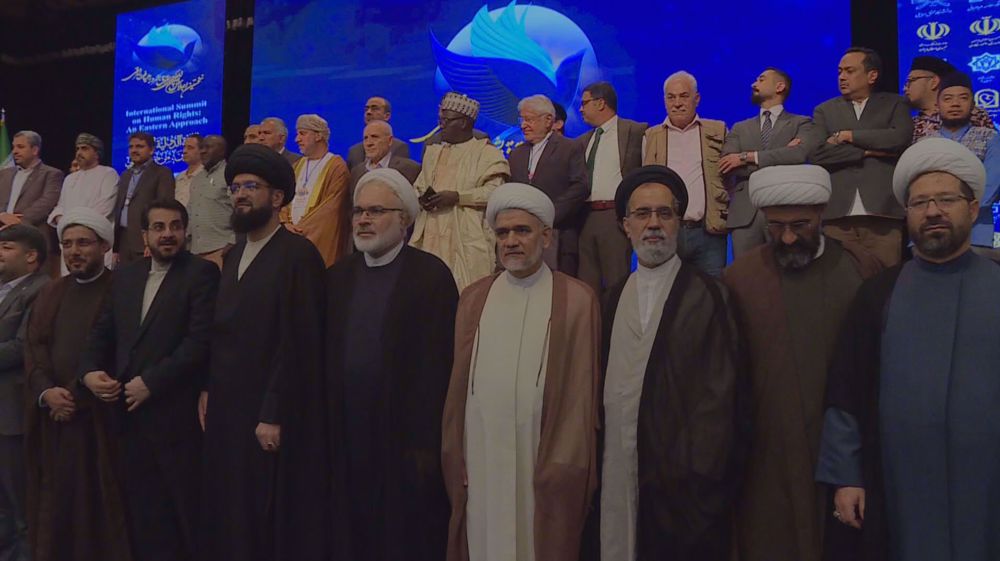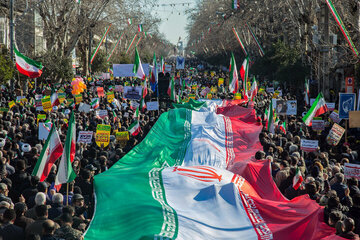Alwaght- By geopolitical centrality and enforcing their principles in their regional roles, Iran and Saudi Arabia are considered as key regional players. They are existing in the world’s most sensitive geopolitical positions, and are surrounded by geopolitically active areas with wide-ranging functions. These surrounding areas make Riyadh and Tehran two major regional and international diplomacy hubs. Such a position gives the two countries the potentials to influence the regional and global developments. At the same time, the functions of the peripheral regions could overshadow the two countries’ struggles. The places of Iran and Saudi Arabia in the regional and global order as well as their actions and bilateral ties with the world powers and the geopolitically-significant regions persistently create new issues that pave the way for a study of dynamic political developments with an emphasis on the geographical realities and especially revisiting the geopolitical phenomena for strategic review and giving explanations for their policies.
Accordingly, over the course of their history a variety of parameters in different fields have affected their competitions. From the all, four parameters are of greater importance. The analysts argue that even change inside these two countries could not eliminate the tensions existing in their relations at least in the four parameters. They are well aware that these parameters are in direct connection to their regional power, and once any of them backs down in the warm regional rivalry, it will stand out as a loser. However, there are other fields like energy that can definitely affect Tehran-Riyadh competition.
1. Iraq
One of the key areas that Saudi Arabia shows great sensitivity about its position and future is Iraq. After 13 years since fall of Saddam Hussein, the kingdom so far declined to start a positive cooperation with Iraq. In fact, the Saudi government for two reasons is discontent with rise of a Shiite-led government in Iraq. First, due to non-existence of the democratic structures in Saudi Arabia. Riyadh is worried that the democratic process implemented in Iraq as first Arab country with democracy could present patterns for other Arab states of the region. Second, the Shiite nature of the Iraqi government is very important in the eyes of the Saudi rulers because any Shiite strength in the region will remove grounds of Saudi influence in the region and at the same time will give the Shiites the chance to grow stronger in Iraq. In the past, Iran, Iraq, and Saudi Arabia have always been three influential and decisive countries of the Persian Gulf region. Agreement of two countries of the three was enough to leave impacts on the region’s significant developments. Now, Riyadh is trying to restore the older status and get Iraq to its side and so use Baghdad to bolster its own place in the region. This can explain why Saudi Arabia is sensitive about the rising Iranian and the Shiites’ role in Iraq. Therefore, as long as the Iraqi conditions are as such and the Shiites hold the key pillars of power in the county, the Saudi-Iranian relations will go on the way they do now.
2. Lebanon and Palestine (Resistance Axis)
Saudi Arabia continuously interpreted the recent decade’s developments, particularly the 33-Day and 22-Day Wars as the showcases of the Iranian influence in Palestine and Lebanon and has made moves to reduce it. Because these developments have strengthened the Resistance Axis in the region which means impairment of the opposite side’s role. Arguing that the Iranians had no right to intervene in the internal affairs of the Arab states, Saudi Arabia began moves in both Lebanon and Palestine in a bid to create a balance in the face of the Islamic Republic. As in Lebanon for example, the kingdom has gone to great lengths to provide support for Saad Hariri-led Future Movement to tip the scales in its favor. But so far it has failed to obtain goals. The government that rules Lebanon now is not a favorable choice of Saudi Arabia, and it appears that in competition over Lebanon, Iran has beaten Saudi Arabia. In this challenge Tehran has a great deal of privileges in rivalry for getting toehold in Lebanon. One of the best privileges is Iran’s tight ties with Hezbollah. At the present time, while the Islamic Republic has the back of the Hezbollah-led March 8 Alliance, the kingdom supports the March 14 Alliance led by Hariri.
In Palestine, while Iran backs such Palestinian groups as Hamas and rejects negotiations with the Israeli regime as an occupying force, Saudi Arabia supports the rival movement of Mahmoud Abbas-led Fatah that approves of peace dialogue with Tel Aviv.
3. Syria
Saudi Arabia specifically looks at Syria from a point of view of competition with Iran and so takes steps against the government of the Syrian President Bashar al-Assad. In fact, the major aim of Riyadh behind taking on Iran in Syria is to scale down Iran’s sway in the region or curb the ever-expanding pattern of Iran’s Islamic Revelation in the Arab world. Riyadh assessed the threats as even more serious following the Arab uprisings after 2011. Saudi Arabia actually evaluated closeness of the resistant groups and Syria to Iran as a factor working to break the regional balance of power and marginalize the Saudi policies. Therefore, as part of Western-Arab front the kingdom seeks to destroy the Iranian influence in Syria. In such conditions, to limit Iran in a larger area, namely in the Middle East, it backs the Syrian opposition groups.
It is noteworthy that the strong wave of the Arab world’s developments has made Saudi Arabia’s geopolitical and geocultural environments susceptible to changes. At the same time, it challenged the kingdom’s policies for keeping the status quo. But the Syrian crisis offered an instrument to Riyadh to abort the new equations of power that were in the making following 2011 Arab uprisings and create its own balance of power against the new post-Arab uprising order. The Western and Arab-backed strategic Saudi role seeks weakening Syria or even deleting Damascus’ regional role. Riyadh’s role makes sense in the two areas of manipulating the regional order and staging an ideological confrontation. Geopolitically, backed by Western-Arab camp, it has put strains on Syria to force it quit holding opposing policies and offering support for the anti-Israeli resistant groups in the region. By removing a strong Syrian role, Saudi Arabia eyes the final goal of deleting the Iranian role in the West Asia. By impairing Syria-Iran axis the kingdom will have the opportunity to exercise influence over Lebanon and Palestine.
4. Islamic awakening
The major Saudi Arabian approach concerning the regional developments is to save the status quo. Such a policy pushed the kingdom to, since the beginning, oppose any change in the revolution-affected countries like Bahrain and Yemen that are neighbors to it. Riyadh saw any change in them as influencing the situation in the kingdom. On the opposite side was Tehran that welcomed and backed the revolutionary developments in these countries and demanded changes in political structures of other regional states.
The wave of post-2011 Arab uprisings have engulfed Saudi Arabia’s peripheral environment with transformations that led to fall of former dictator of Egypt Hosni Mubarak as the key ally of the compromising Arab camp, challenged the ruling power in countries like Bahrain and Yemen as the kingdom’s key areas of influence, and raised democracy-seeking voices inside Saudi Arabia. All these developments have negatively influenced Riyadh’s place as an important regional player. In reaction, the Saudis spared no effort— in association with the West and particularly the US— to prevent any loss in rivalry with Iran. For example, in Yemen Al Saud supported the unconstitutional pro-Riyadh government led by the resigned president Abd Rabbuh Mansour Hadi in the face of a purely pro-democracy revolution of the Yemenis. Or in Bahrain for example, the Bahraini government is backed by Riyadh in its repression of the anti-government protests. On the other side stands Iran that supports the demonstrating revolutionaries.
Based on what was mentioned above, the Iranian-Saudi regional competitions are unavoidable due to the two countries’ geopolitical positions. They entered an even more serious stage in the recent decade and it is not easy to relax them, especially that this rivalry directly determines increase or decrease of their regional power. Additionally, the contention can even warm up in areas of greater significance. The tensions can easily escalate due to the need for quick decisions in the time of crisis.
Having the above-mentioned conditions in mind, it seems that the two countries, in addition to expanding their areas of sway and guaranteeing their geopolitical supremacy— this is especially observable in Syria—, will need to build stronger diplomacy with the international community, particularly with the influential countries, in a bid to make gains over each other.



























